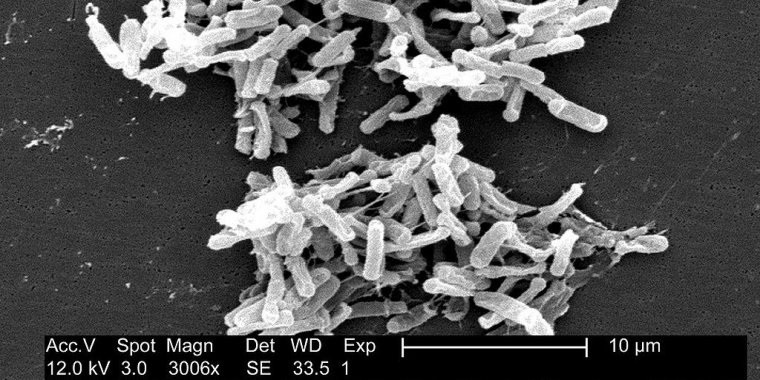| Health / Health News |
Study finds gut microbiome can control antitumor immune function in liver
Scientists have found a connection between bacteria in the gut and antitumor immune responses in the liver. Their study showed that bacteria found in the gut of mice affect the liver’s antitumor immune function. The findings have implications for understanding the mechanisms that lead to liver cancer and for therapeutic approaches to treat them.

Scanning electron micrograph of en: Clostridium bacteria from a stool sample. Image credit: Centers for Disease Control and Prevention
“What we found using different tumor models is that if you treat mice with antibiotics and thereby deplete certain bacteria, you can change the composition of immune cells of the liver, affecting tumor growth in the liver,” said Tim Greten, M.D., of NCI’s CCR, who led the study.
The microbiome is the collection of bacteria and other microorganisms that live in or on the body. In humans, the greatest proportion of the body’s total microbiome is in the gut.
Despite extensive research into the relationship between the gut microbiome and cancer, the role of gut bacteria in the formation of liver cancer has remained poorly understood.
To investigate whether gut bacteria affect the development of tumors in the liver, Dr. Greten and his team carried out a series of experiments with mice.
They used three mouse models of liver cancer, and found that when they depleted gut bacteria using an antibiotic “cocktail,” the mice that had the antibiotics developed fewer and smaller liver tumors and had reduced metastasis to the liver.
Antibiotic treatment increased the numbers of a type of immune cell called NKT cells in the livers of the mice. Further experiments showed that, in all three mouse models, the reduction in liver tumor growth that resulted from antibiotic treatment was dependent on these NKT cells.
Next, they found that the accumulation of the NKT cells in the liver resulted from an increase in the expression of a protein called CXCL16 on cells that line the inside of capillaries in the liver.
“We asked ourselves, why do mice treated with antibiotics have more CXCL16 production in these endothelial cells?” Dr. Greten said. “That was the critical point, when we found that bile acids can control the expression of CXCL16. We then did further studies, and found that if we treat mice with bile acids, we can actually change the number of NKT cells in the liver, and thereby the number of tumors in the liver.”
Bile acids are formed in the liver and help break down fats during digestion.
Finally, the investigators found that one bacterial species, Clostridium scindens, controls metabolism of bile acids in the mouse gut — and ultimately CXCL16 expression, NKT cell accumulation, and tumor growth in the liver. (National Institutes of Health)
YOU MAY ALSO LIKE

